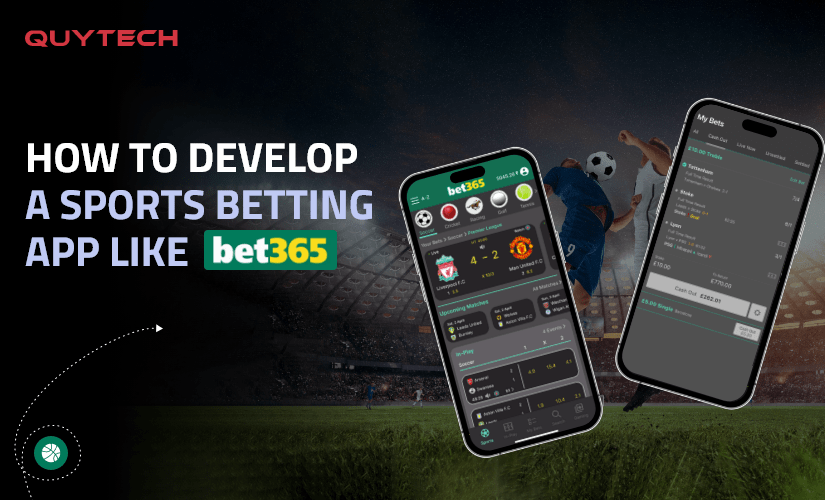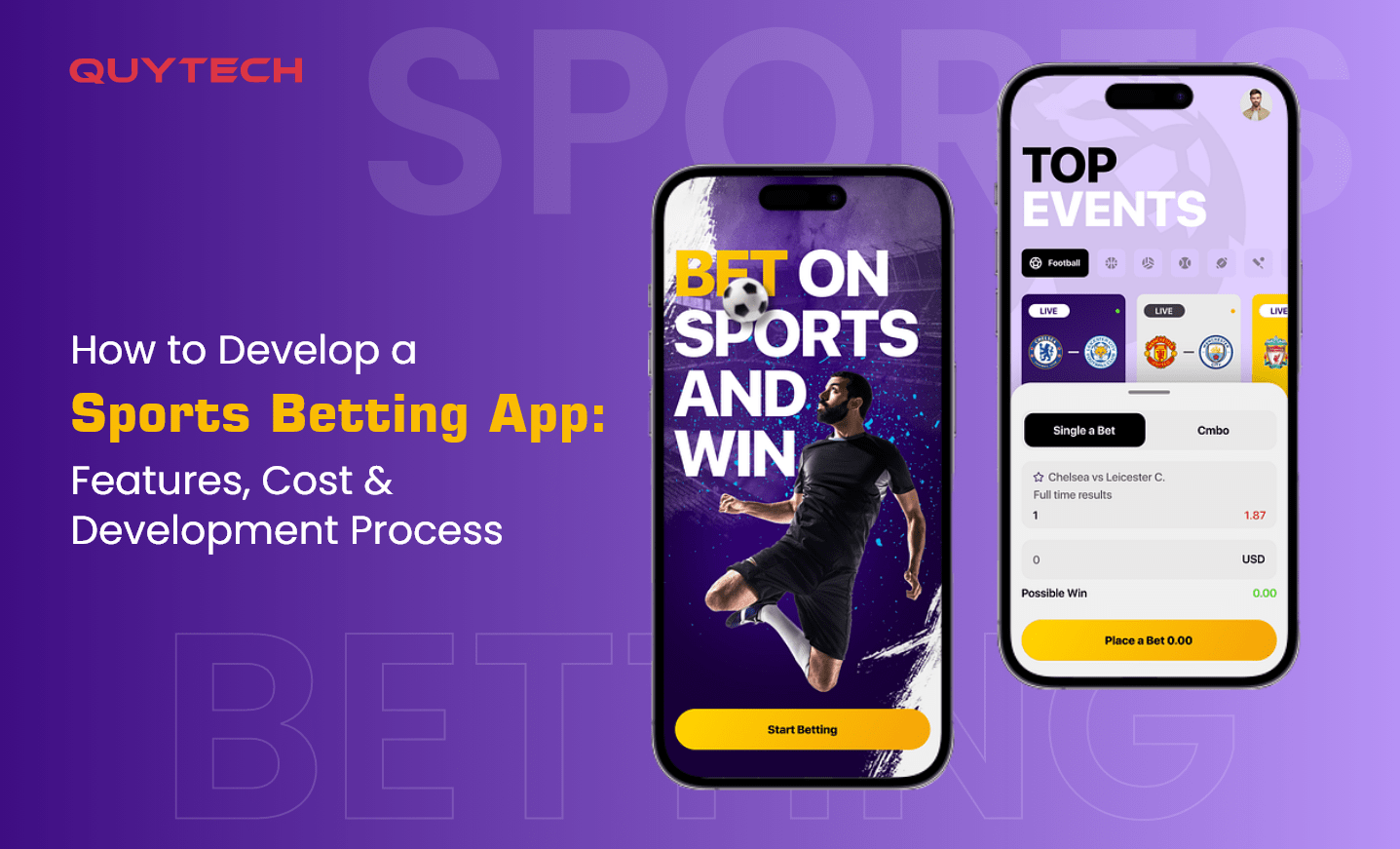What are the Steps Involved in Sports App Development?
Sports app development solutions include a stepwise process; experienced sports app developers follow the steps below to create a feature-rich and future-ready app:
Idea and Conceptualization
At first, the development team understands the requirements of the client. They define the goal and features of the sports app development solutions. They determine the target audience, the USP (unique selling points), and the overall vision of the app.
Market Research
We are the top fantasy sports app development company with a dedicated team to conduct thorough market research to understand the market competition, customers’ demands, and market trends. Also, they identify the user’s pain points to decide how the sports app will overcome them.
Wireframing and App Design
Once the market research is done, the development team at Quytech, a top sports app development company in India, creates a wireframe of the sports app’s interface. It will help in understanding what the app will look like. Also, they design the app’s logo, navigation, and other visual elements.
Development
After designing, the developers at the best sports app development services provider begin developing the sports app’s backend and then the frontend, leveraging the right technology stack, including frameworks, databases, programming languages, and deployment platforms. Moreover, they implement advanced technologies, such as AI, ML, Blockchain, IoT, etc., according to the client’s custom app requirements.
Testing
Post-development, the testers and quality analysts at any top sports app development company tests the sports app to ensure flawless functionality, usability, security, and performance. They identify if the app has any bugs or glitches and fix them before launching the app to the App Store or Play Store. Moreover, they optimize the app to ensure it runs smoothly on all devices, operating systems, and screen sizes.
Deployment
The last step in the sports app development solutions is to launch the sports app in the respective App Store or Play Store. Before doing so, developers go through the particular store’s guidelines. They continuously look for customer feedback and make necessary improvements.
4 Factors to Consider When Hiring a Fantasy Sports App Development Company
The following are the factors required to be considered while hiring the best fantasy sports app development company in the USA to build cutting-edge sports app development solutions.
Technical Expertise and Experience
Not all sports apps require the same tech stack and expertise for app development. Therefore, make sure the top sports app development company in the USA has the relevant experience and technical proficiency. To ensure the same, check their portfolio or case studies section.
Customization and Scalability
Customization ensures the sports app meets your unique business requirements and aligns with your business goals. Similarly, scalability guarantees that you can add/remove features to the app if your business scales up or down.
To understand this, let’s take an example. You want a sports app to sell sports equipment for cricket, but in the future, you may want to sell football or any other sports equipment. In that case, you will have to scale your app to add more equipment details and related features. Keep this factor in mind while choosing a custom sports app development services provider.
Effective Communication
Communication is one of the essential factors to consider when selecting a sports application development company. Thus, check what measures or tools a sports software development services provider follows to maintain the same. Also, verify if the company shares regular progress reports or not.
Post-Launch Support and Maintenance
Support and maintenance services are essential to ensure the sports app runs flawlessly even after the launch. It is also required to add new features. Hence, check if the sports software development company provides this service or not.
What are the Key Features of a Sports App?
Features of a sports mobile app, developed by a trusted sports software development company, may differ from those of others. While some common features include sign-in, registration, user profile creation, live scores, updates, and player profile creation, it is essential to add advanced features to make your sports mobile app stand out.
Here are some of the advanced features of a sports app:
Self-Training Using AI and ML
Quytech, a trusted sports software development company, integrates advanced self-learning learning models and algorithms by using AI and ML to facilitate continuous improvement.
Push Notifications
Push notifications automatically send sports-related updates, upcoming events, game results, and other essential information to app users. The feature improves customer engagement, which is favorable for any business associated with sports.
Social Media Integration
This feature empowers sports mobile app users to share updates, scores, and other sports-related content on social media platforms, including Facebook, Instagram, etc. It also increases your app’s popularity and can increase the customer base. Make sure the custom sports app development services provider that you choose equips your app with this feature.
Data Analytics
Data analytics is an integral feature of almost every mobile app, including a sports mobile app. On one side, it helps businesses to make data-driven decisions and make necessary changes in the app.
On the other side, the feature enables sports app users to analyze teams, player performances, and more, improving their experience. As the top sports app development company in India, we integrate this feature to enable your sports app to make the most of your business data and offer critical insights.
Gamification
Gamification is a buzzword in the mobile app industry. It helps to boost customer engagement by adding user-friendly gaming elements, such as quizzes, puzzles, and polls, to the app. With our custom sports app development services, we integrate this feature into sports apps to enhance user experiences.
Community and Forums
Providing the community and forums by integrating discussion boards and chats can engage sports enthusiasts to use the app and converse with each other. Most sports software development services providers add this feature to sports applications.
Multiple Payment Options
Sports apps like sports betting apps, fantasy sports apps, live streaming apps, and more, created by a trusted fantasy sports app development company, involve transactions. Therefore, it is essential to provide multiple payment options, such as credit cards, debit cards, wallet payments, net banking, etc., to allow users to make secure and hassle-free transactions.
Two-Factor Authentication
The two-factor authentication improves the security of sports apps; thus, it should be a part of your feature list. It assures the users that even if their password is compromised, an unauthorized user cannot access their account. Ask the custom sports app development services provider you partner with to add this feature.
Immersive Experience with AR and VR
Augmented reality and virtual reality enable users to have a lifelike experience. By integrating them into a sports mobile app, businesses can give their users an immersive and delightful experience during their gameplay and while watching sports.
Offline Mode
Allowing users to use the app without an internet connection has been gaining popularity over the past few years. You can also consider adding this to your app to make it stand out from the competitors. Make this feature a part of your sports app/software development requirements that you share with your sports software development company.
Sports App Development Challenges and Their Solutions
Inability to Integrate Real-Time Data
Implementing real-time sports data, including players’ statistics, live updates, and more, can be challenging.
To overcome this problem, a reputed fantasy sports app development company can use API services offered by different sports data provider companies. Moreover, they can also implement advanced data caching techniques and strategies.
Difficulty with Building Intuitive UI/UX
Creating an intuitive user interface and user experience for a sports app is crucial for its success. However, the lack of experience in the domain or not choosing the right tech stack can be a roadblock to it.
Sports software development services providers can conduct thorough user research to understand potential app users’ behavior and choices. Another solution is to focus on simplicity and consistency and run usability design testing to refine the user experience.
Performance Optimization-Related Problems
Performance-related issues occur mainly during peak usage or when the app experiences heavy traffic. It can be challenging to ensure smooth and flawless performance as apps may crash.
Best sports app development services providers employ efficient coding practices, run usability and functionality tests, and apply server-side caching to resolve this issue. These practices also help sports app developers to monitor and optimize the app’s performance.
Cross-Platform Compatibility-Related Issues
An app may also find compatibility-related challenges, directly impacting the customer experience and a brand’s reputation. It happens due to poor selection of technology infrastructure and not testing the app on different devices, operating systems, platforms, and screen sizes.
Using advanced frameworks, such as React Native or Flutter, can be a lifesaver in this situation. These technologies are designed to build cross-platform applications with a single codebase. Besides, the best sports app development services providers test the app on all targeted devices and platforms to ensure compatibility.
Security-Related Problems
Ensuring the security of users’ personal information and payment-related information is also a big challenge. Businesses have to protect this data from unauthorized access, cyberattacks, or breaches.
A simple solution to this problem is implementing highly advanced data encryption techniques and methods, such as two-factor authentication. Moreover, adhering to industry security standards and guidelines can also prevent security-related concerns. Another effective solution that a leading sports software development company can follow is to update the app regularly to address new threats.
Not Choosing the Right Monetization Strategy
Not selecting a proper monetization plan or strategy could be one of the biggest reasons behind your app’s failure.
To avoid this problem, identify your potential users’ preferences and market trends to decide the right monetization model. Don’t offer everything for free; similarly, don’t put a price tag on every service. You can implement a mix of free and premium, known as freemium, models and choose monetization options such as in-app purchases and advertisements. You can consult this with your sports software development services provider as well.
Challenge With Engaging and Retaining Users
Keeping your app users engaged and making them use the app again is one of the cumbersome tasks.
Ensuring personalized user experiences with push notifications can improve user experience and engagement. Moreover, sports app developers, at the best sports application development company, can also implement gamification elements, such as quizzes, puzzles, discussions, and polls, to improve the user retention rate.
Managing and Updating the App’s Content
A sports app, built by a fantasy sports app development company in India, provides regular content updates, such as news, articles, videos, and more, to its users. Managing existing and updating new content can be a big concern.
Integrating a user-friendly content management system that facilitates easy content creation and organization can solve this problem. It would be a cherry on top if the CMS automates content updates via APIs and different content scheduling tools.
































































